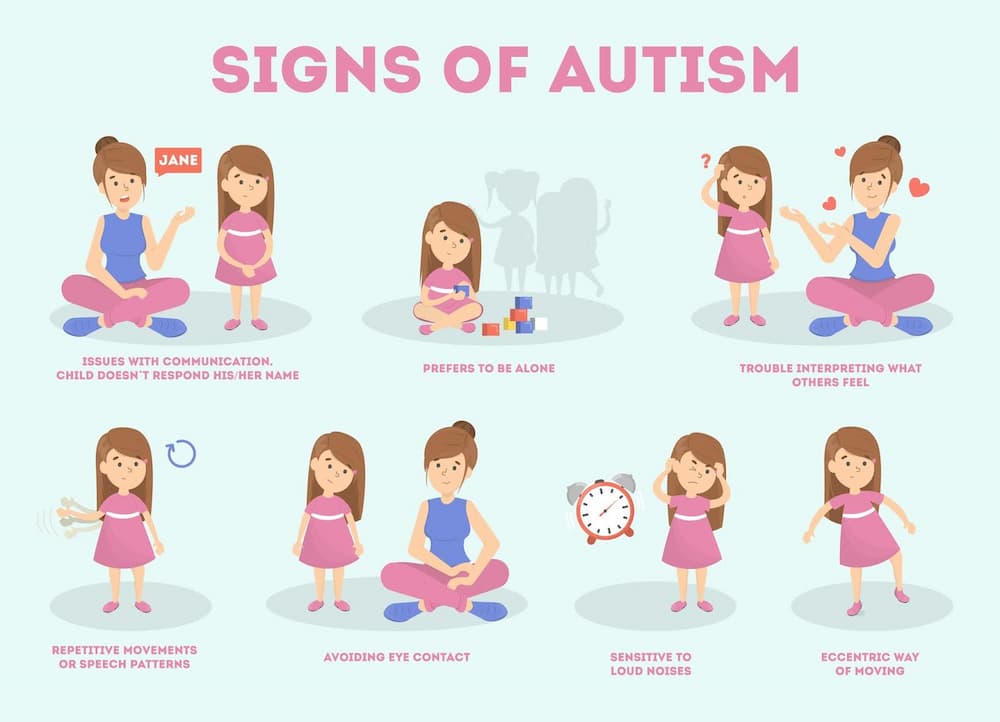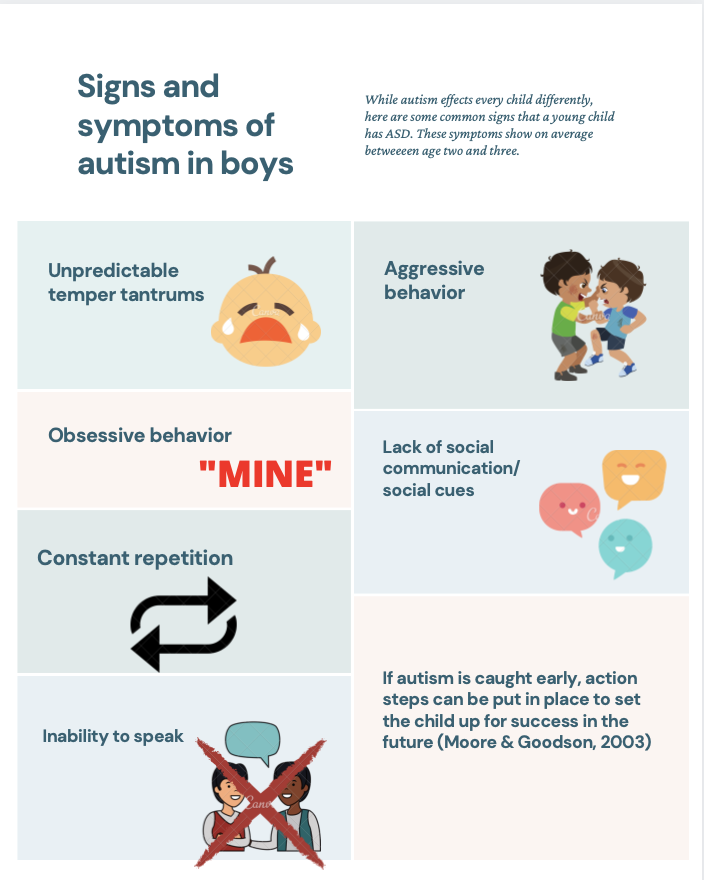Why social interactions can develop with Autism Spectrum Therapies
Why social interactions can develop with Autism Spectrum Therapies
Blog Article
Recognizing the Influence of Behavioral Autism on Day-to-day Live and Social Communications
You might not recognize exactly how deeply behavior autism impacts daily life and social interactions. People on the range commonly browse a world filled up with communication hurdles and sensory overload. These obstacles can lead to irritation and seclusion, affecting their connections and total well-being.
Specifying Behavior Autism and Its Characteristics
Behavior autism, commonly referred to as autism range condition (ASD), incorporates an array of problems characterized by challenges in social communication, interaction, and repeated actions. You might see that people with ASD commonly have a hard time to translate social cues, which can lead to misunderstandings in conversations. They may find it hard to establish eye get in touch with or participate in tiny talk, making social situations feel frustrating.
Communication problems can manifest in numerous means, from delayed speech development to a preference for using fewer words. Recurring actions, such as hand-flapping or rocking, can act as coping devices to handle stress or sensory overload. These qualities can exceptionally influence day-to-day life, making it crucial for you to comprehend and sustain those with ASD. By recognizing these qualities, you can foster an atmosphere that promotes approval and motivates reliable communication, helping individuals with autism flourish in their day-to-day interactions.
The Range of Autism: Recognizing Irregularity in Actions
Autism spectrum condition (ASD) isn't a one-size-fits-all medical diagnosis; it varies extensively amongst individuals. You may observe that some individuals with ASD display light signs, while others may encounter more substantial challenges. This variability can materialize in behaviors, interests, and sensory sensitivities. You might encounter people that are highly verbal and involve easily in conversations, while others might favor solitary tasks or interact non-verbally.
Furthermore, the means people with ASD react to sensory input can vary significantly; some may be bewildered by bright lights or loud sounds, whereas others flourish in boosting settings. The range also consists of distinctions in social communications; some people might battle to translate social cues, while others browse social settings with loved one simplicity. Comprehending this variability is crucial, as it aids you value each person's distinct experience and dressmaker assistance to their certain requirements, promoting a much more inclusive setting for everybody.
Communication Obstacles Encountered by People With Autism
When you connect with individuals on the autism spectrum, you might observe their one-of-a-kind communication difficulties. They frequently encounter problems with both verbal and nonverbal signs, which can affect their social communications. Recognizing these barriers is important for promoting far better links and support.

Verbal Communication Difficulties
Numerous people on the autism range experience verbal communication difficulties that can considerably affect their daily interactions. Your tone, pace, or volume may not align with social assumptions, causing others to misinterpret your purposes. Recognizing these obstacles can assist you and your support network establish methods to enhance communication and promote far better connections with others in your everyday life.
Nonverbal Communication Obstacles
Verbal communication isn't the only obstacle people on the autism spectrum face; nonverbal interaction barriers can be simply as substantial. These difficulties can lead to misconceptions or misconceptions of social hints, making interactions really feel overwhelming or complex. By dealing with nonverbal communication, you can discover methods to improve your social experiences and boost your overall quality of life.
Social Interaction Effects
Social interactions can frequently really feel frustrating as a result of the unique communication obstacles encountered by individuals with autism. You could deal with analyzing social cues, making it difficult to comprehend sarcasm or body movement. This can cause misunderstandings or unpleasant moments in discussions. In addition, launching and preserving discussions might really feel tough, triggering stress and anxiety in social scenarios. You might favor organized settings, making spontaneous interactions uncomfortable. It's also usual to experience trouble in taking part in little talk, which can prevent forming new relationships. Identifying these difficulties can assist you discover approaches to boost interaction, such as exercising social abilities in safe setups or using visual help - Aba Therapist. Recognizing your requirements allows you to browse social communications with better self-confidence and convenience.
Social Interaction and Connection Structure in Autism
While building connections can be testing for individuals with autism, comprehending their special point of views and communication styles can foster purposeful links. You might observe that lots of individuals on the range like straight communication and may battle with social cues or tiny talk. By being uncomplicated in your communications, you can aid develop an environment where they feel comfortable.
Make the effort to listen and observe exactly how they express themselves. This understanding can direct you in guiding conversations extra efficiently. Involving in shared rate of interests can likewise act as a bridge to deeper connections. Whether it's a leisure activity, a favorite program, or a shared passion, these common strings can open doors to relationship.
Day-to-day Live Regimen: Navigating Obstacles and Strategies
Steering every day life regimens can be particularly challenging for individuals with autism, particularly when unexpected modifications occur. You might locate comfort in having an organized timetable, as it aids you expect what's next. It's typical to really feel overloaded or distressed when disruptions occur. To navigate these challenges, think about executing visual timetables or lists. These tools can you can check here give clearness and peace of mind.
Establishing a routine that consists of sensory breaks can additionally be helpful. This aids develop an understanding environment.
Lastly, method mindfulness methods to handle anxiety and anxiety. Basic breathing exercises or grounding techniques can make a significant distinction. By integrating these strategies, you can enhance your everyday regimen and lessen disruptions, making life feel much more workable.
Toughness and Capacities of Individuals on the Autism Range
Comprehending day-to-day live regimens is simply one aspect of the autism experience. Lots of individuals on the autism range possess amazing strengths and capacities that establish them apart. You may find that your attention to information is outstanding, allowing you to master jobs that require precision and focus. Your capacity to believe outside the box can result in ingenious solutions in numerous scenarios.
In addition, your memory skills frequently shine, specifically in areas of interest. Aba Therapist Near Me. This propensity for keeping details can make you a beneficial source in fields like innovation, science, or art. You might likewise show strong visual reasoning, allowing you to visualize complex concepts and fix issues artistically
Additionally, your special point of view on the globe can foster compassion and understanding in others, enriching social interactions. Embracing these strengths not only boosts your confidence but also helps others appreciate the diverse abilities you offer the table.
Developing Comprehensive Environments for People With Autism
Developing comprehensive environments for people with autism begins with making sensory-friendly spaces that accommodate their unique needs. You can additionally foster opportunities for social interaction, helping to construct connections and friendships. By making these modifications, you'll add to a much more welcoming environment for every person.
Designing Sensory-Friendly Spaces
While making sensory-friendly rooms, it's important to mirror on the one-of-a-kind requirements of people with autism. Integrate quiet zones where individuals can retreat and recharge when overwhelmed. Include visual timetables or clear signs to help individuals browse the space with confidence.
Promoting Social Communication Opportunities
Designing sensory-friendly spaces not just addresses specific comfort however additionally sets the stage for meaningful social interactions among individuals with autism. To promote these communications, develop inclusive atmospheres that invite involvement. Organize structured tasks, like art classes or team games, that urge collaboration without frustrating sensory input. Usage visual aids and clear interaction to assist everybody involve easily. Motivate peer mentoring, pairing people with autism with helpful peers that can assist them through social scenarios. Additionally, think about holding regular area occasions that celebrate neurodiversity, fostering approval and understanding amongst all individuals. By implementing these methods, you can enhance social possibilities, helping people with autism construct friendships and strengthen their social skills in a risk-free, welcoming atmosphere.

Regularly Asked Inquiries
How Can Buddies Assistance Somebody With Behavioral Autism?
You can sustain a friend with behavioral autism by being patient, paying attention proactively, and respecting their borders. Take part in activities they appreciate, communicate openly, and produce a comfy environment where they feel valued and recognized.
What Resources Are Readily Available for Moms And Dads of Kid With Autism?
You can discover various resources for moms and dads of youngsters with autism, consisting of assistance groups, instructional websites, and local social work. Connecting with other click to investigate parents can additionally give important insights and shared experiences to help browse obstacles.
Can Behavioral Autism Modification Over Time?

Yes, behavior autism can alter in time. You might discover shifts in communication, social skills, and behavior as your child expands. Early treatment and support commonly play crucial duties in these developmental adjustments.
How Do Sensory Sensitivities Affect Life?
Sensory sensitivities can make daily experiences overwhelming. You might struggle with loud noises or intense lights, causing anxiety or avoidance. Finding settings that suit your demands can greatly boost your comfort and overall every day life.
What Prevail Misconceptions Regarding Behavioral Autism?
You could look at here now think behavioral autism just affects communication abilities, yet it's more complicated. Numerous presume people do not have empathy or knowledge, which isn't true. Recognizing these false impressions assists foster approval and support for those on the range.
Behavioral autism, often referred to as autism range disorder (ASD), includes a range of conditions identified by obstacles in social interaction, interaction, and repetitive behaviors.Social communications can usually feel frustrating due to the one-of-a-kind interaction difficulties faced by individuals with autism.Designing sensory-friendly areas not just addresses private convenience yet additionally establishes the phase for purposeful social communications among people with autism. Encourage peer mentoring, matching people with autism with helpful peers who can direct them with social situations. By applying these techniques, you can enhance social opportunities, aiding individuals with autism build friendships and reinforce their social abilities in a secure, inviting setting.
Report this page